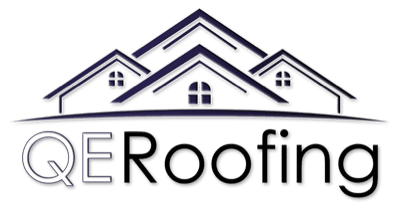QE Roofing is a preferred installer of Inland Coatings roof coatings. Inland Coatings is one of the largest manufacturers of roof coatings in the US. We have applied over 1,000,000 square feet of roof coatings and we still have a flawless reputation. This should make any potential customer feel comfortable knowing we take pride in our work. We appreciate the opportunity to serve you and will strive to make your roofing project an unforgettable great experience.
Coatings
A roof coating is a fluid material applied in the field as a film to the roof surface to provide weather protection to the original roof membrane. A coating protects the roof substrate from weather (solar radiation, heat and moisture). Coatings are typically composed of binders, pigments, fillers, modifiers and typically a solvent, along with the other ingredients.
The sum of the pigments, fillers, binders and modifiers that do not evaporate during curing of the coating product is the nonvolatile portion of the coating and defines the "total solids" level of the coating. Solids may be presented two ways: SBW-solids by weight (solids as a percentage of total weight of 1 gallon of coating) and SBV- solids by volume (solids as a percentage of the volume of 1 gallon of coating). Although SBW and SBV sound similar, they can vary significantly between different types of coatings.
The quality of the coating depends on the formulation, choice of all the raw materials in the coating, and amounts and ratios of all the components. The pigment/binder ratio is critical. There has to be sufficient binder to encapsulate and hold all the product components together in the continuous film. However, excessive or insufficient amounts of binder may negatively affect other properties of the coating (e.g., cure time, elasticity). Binder selection is also important. As an example, an acrylic binder may be specified for an application, but there are literally dozens of binders that may be used in a roof coating and each will impart different performance properties. For example, an acrylic binder used in a coating for metal roofs may be entirely different from the acrylic binder used in a coating that will adhere to an asphalt roof.
Drying and Curing Mechanisms: For roof coatings, the term "dry" is not the same as "cured." A coating may be dry to the touch and yet not fully cured. The following terms are often used to describe the various states of drying:
- Tack free: Dust will not stick to the coating.
- Dry to touch: Touching with a finger, using the weight of the hand only, will not leave a fingerprint.
- Dry to recoat: The base coat may be walked on and the top coat can be applied without volatiles being trapped between the coats.
A coating is considered "cured" when it has achieved its ultimate performance characteristics by becoming a solid film from its original fluid state. Some coatings may take up to 30 days to fully cure. There are three mechanisms by which typical roof coatings can cure:
Coating manufacturers should be consulted for approximate drying and curing times and factors that can speed, delay or prevent these processes. Ambient factors include temperature, humidity, wind speed, etc.
The solids level of a coating defines the amount of material left on the roof substrate after the volatile portion of the coating evaporates during the curing process. Because coatings are applied as fluids, the percent of solids by volume is used to determine the final thickness of the cured film over the roof substrate.
One gallon of any fluid material uniformly applied to 100 square feet (1 roofing square) will provide a wet film thickness of 16 mils.
Roof Coating Characteristics: A variety of roof coatings are available for different applications. The quality of typical roof coatings can vary dramatically depending on intended use and service life. The life expectancies of roof coatings will depend heavily on the suitability of the substrate to be coated; preparation and condition of the substrate over which the coatings are to be applied; quality of the coating; uniformity of the total finished dry mil thickness; roof drainage; and environment (e.g., geography, climate, surface traffic) in which the coating is expected to perform.
When properly designed and installed, roof coatings can:
- Improve reflectivity of a roof's surface (if the coating is designed to do so)
- Reduce cooling loads on a building's interior if the coating is more reflective than the existing roof surface
- Possibly help reduce the heat island effect by reducing ambient air temperatures
- Protect a roof substrate from further weathering and/or oxidation
- Improve aesthetics of visible roof areas
- Extend the expected service lives of some roof systems
- Enhance a roof system's fire resistance
- Provide a watertight system
Reference: National Roofing Contractors Association, The NRCA Roofing Manual: Membrane Roof Systems, National Roofing Contractors Association 10255 W. Higgins Road, Suite 600, Rosemont, IL 60018, 2011

